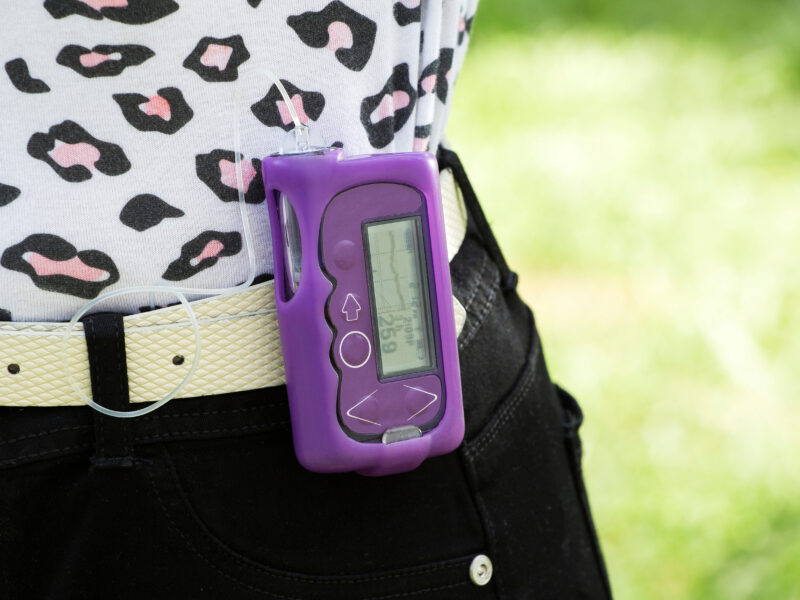Perceptions About Type 2 Diabetes Differ Among Adolescent Patients, Parents and Physicians
Perceptions About Type 2 Diabetes Differ Among Adolescent Patients, Parents and Physicians https://pediatricsnationwide.org/wp-content/uploads/2022/04/042319BSBS0817_1-1024x683.jpg 1024 683 JoAnna Pendergrass, DVM JoAnna Pendergrass, DVM https://pediatricsnationwide.org/wp-content/uploads/2021/03/pendergrass_01.jpg- April 12, 2022
- JoAnna Pendergrass, DVM

Differing perceptions about type 2 diabetes among teens, parents and physicians can create barriers to diagnosing and managing the disease.
Type 2 diabetes (T2D) is becoming increasingly prevalent in adolescents, with a median age of diagnosis of 13.5 years in the pediatric population. Managing pediatric T2D is challenging, given that traditional medical and non-medical T2D management strategies tend to be less effective in adolescents than adults.
A lack of knowledge among adolescents and their parents about T2D risk factors and symptoms and a low perceived risk of receiving a T2D diagnosis create a formidable diagnostic barrier.
A recent study published in Global Pediatric Health reported the divergent perceptions about T2D among adolescent patients, parents, and physicians.
“Among the triad of participant groups, there was incongruence surrounding recognizing risk factors before diagnosis, identifying symptoms at diagnosis, and managing T2D after diagnosis,” says Rohan Henry, MD, MS, a pediatric endocrinologist at Nationwide Children’s Hospital and co-author of the recent study.
He explains that the study’s novelty was that it involved adolescent patients, parents and physicians, rather than only patients and parents.
Dr. Henry and his research team conducted 30-minute phone interviews with 24 participants: eight adolescent patients with T2D, eight parents, and eight physicians with experience managing pediatric T2D. Parents and physicians were not connected to the patients.
After analyzing the interview responses, the researchers identified four major themes and compared these themes between participant groups.
Theme 1 was surprise of the T2D diagnosis among patients and parents, despite the patients having T2D symptoms and risk factors. One patient remarked, “I was super surprised because I would never think that I would be the type of person that has to take multiple shots a day.” This surprise, explains Dr. Henry, “suggests a lack of awareness of the disease’s symptomology.”
Theme 2 was discordance among participant groups about symptoms before diagnosis. All participant groups commonly reported fatigue before diagnosis but tended to attribute this to typical adolescence rather than T2D; retrospectively at diagnosis, parents and adolescents connected the symptoms to the disease. Parents and physicians commonly reported polyuria and polydipsia, as well as the absence of symptoms.
Theme 3 was a difference in perceptions of T2D risk factors. For example, half of parents and physicians reported weight gain as a risk factor, while only 1 of 8 patients did so. The groups were also inconsistent in reporting eating habits and physical activity as risk factors. One parent remarked, “We weren’t active. We weren’t doing what we were supposed to do, as in watching our eating habits.”
Theme 4 was discordance about post-diagnosis T2D management. Patients and parents focused on lifestyle factors and medication adherence, while physicians raised concerns about social determinants of health, such as access to transportation and socioeconomics. Dr. Henry believes that parents of adolescents with T2D would be receptive to learning more about the social determinants of health and how they influence T2D diagnosis and management.
Unifying these different perceptions involves education, early screening, and data collection in medical records. “Patients at risk of T2D and their parents should be aware of the specific risk factors of the disease,” says Dr. Henry. This education, he explains, should begin in the pre-teen years at primary care appointments and through written material, as well as school-associated early screening programs.
For patient medical records, Dr. Henry suggests including data such as the amount of weight gain or change in BMI pattern, dietary habits, quantifiable physical activity, and social determinants of health.
“Collecting these data may be useful,” he says, “in future prospective cohort studies geared toward showing causation and not just associations between risk factors and T2D development.”
Reference:
Xu J, Pratt K, Chaudhari M, Henry R, Hubbard RA, Siegel R, Eneli I. On a Different Page! Perceptions on the Onset, Diagnosis, and Management of Type 2 Diabetes Among Adolescent Patients, Parents, and Physicians. Global Pediatric Health. 2021 Sep 24.
Image credit: Nationwide Children’s Hospital
About the author
JoAnna Pendergrass, DVM, is a veterinarian and freelance medical writer in Atlanta, GA. She received her veterinary degree from the Virginia-Maryland College of Veterinary Medicine and completed a 2-year postdoctoral research fellowship at Emory University’s Yerkes Primate Research Center before beginning her career as a medical writer.
As a freelance medical writer, Dr. Pendergrass focuses on pet owner education and health journalism. She is a member of the American Medical Writers Association and has served as secretary and president of AMWA’s Southeast chapter.
In her spare time, Dr. Pendergrass enjoys baking, running, and playing the viola in a local community orchestra.
-
JoAnna Pendergrass, DVMhttps://pediatricsnationwide.org/author/joanna-pendergrass-dvm/
-
JoAnna Pendergrass, DVMhttps://pediatricsnationwide.org/author/joanna-pendergrass-dvm/
-
JoAnna Pendergrass, DVMhttps://pediatricsnationwide.org/author/joanna-pendergrass-dvm/
-
JoAnna Pendergrass, DVMhttps://pediatricsnationwide.org/author/joanna-pendergrass-dvm/
- Posted In:
- Clinical Updates
- In Brief
- Research










